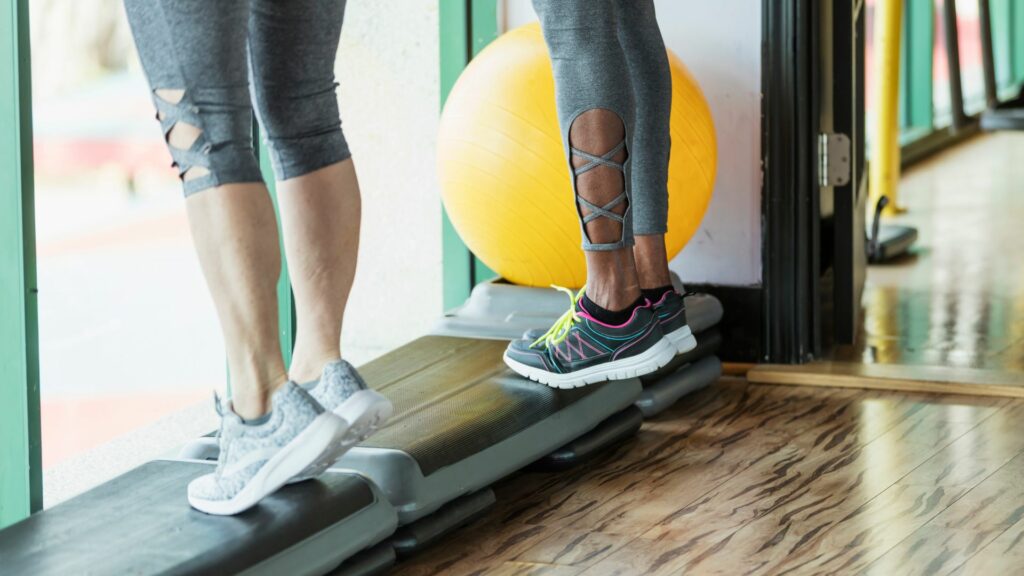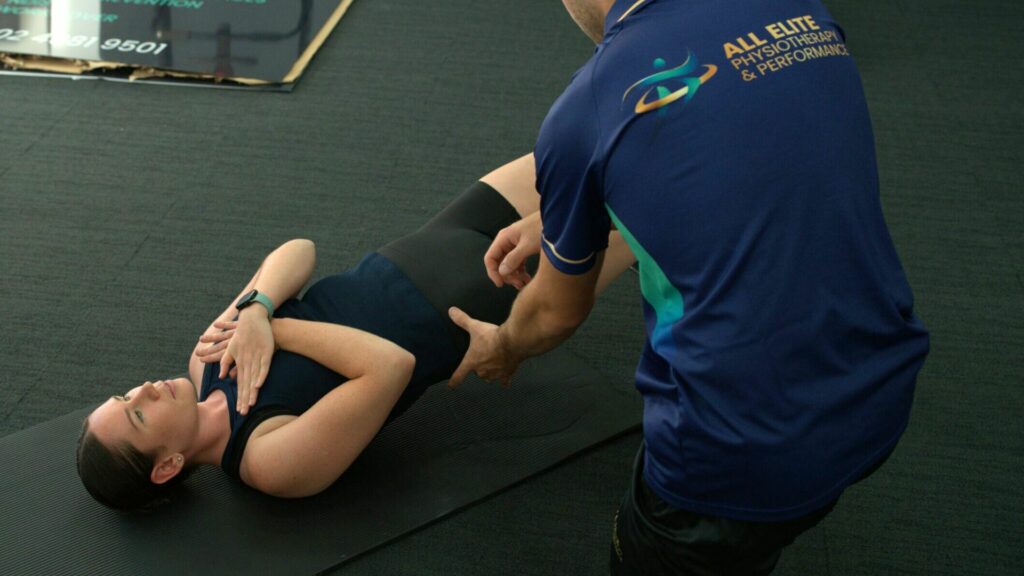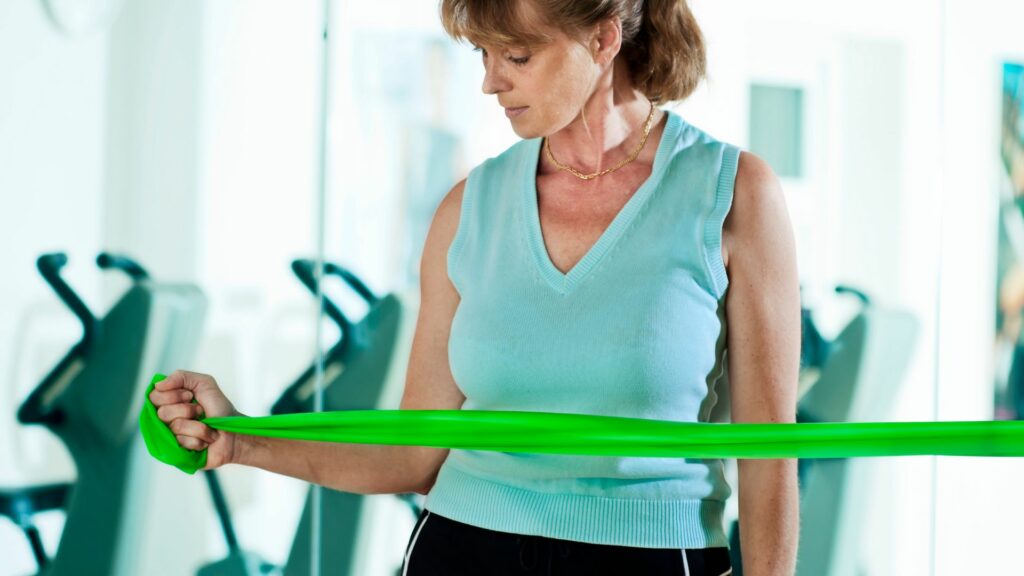Rehabilitation Exercises for Common Sports Injuries (That Actually Work)
After an injury such as a fracture, dislocation or sprain, moving your body might be the last thing you feel like doing. However, rehabilitation exercises can ease pain, help you recover faster and restore your range of motion and flexibility.
From accelerating recovery to strengthening muscle for future injury prevention, we're going to take you through some basic exercises to aid your recovery and get you back to your daily activities and sports you love.
Best of all, you can perform this physical therapy at home yourself, without any fancy equipment.
Ankle Sprains
A sprained ankle occurs when you roll or twist awkwardly, causing ligaments between the bones to stretch, tear, or bleed around the joint. Ankle sprains can be either acute, following a single trauma, or chronic.
An ankle sprain can occur with simple activities such as walking on uneven surfaces, jumping or pivoting, or during a higher intensity activity, for example, when someone steps or lands on your foot whilst playing a sport.
Rehabilitation exercises
- Ankle Circles/Ankle Alphabet - This simple exercise can help improve your range of motion. Sitting comfortably, move your ankle side to side, up and down, or even write the alphabet at least 10 times, three times a day. This will help to improve your range of motion and regain functional movement.
- Controlled Big Toe Flexion - Sit on a chair and have your feet on the ground. Start with all your toes lifted off the ground but the pad of your foot is still touching. Without moving your smaller toes, push your big toe down to touch the ground. Then repeat.
- Calf Raises - Start with feet shoulder width apart. Keeping pressure between big and 2nd toe, slowly raise up onto your toes as high as you can, then slowly down. Don't roll your feet out or allow knees to bend.

Meniscal Injuries
The meniscus is a C-shaped cartilage in the knee that acts as a shock absorber between the thighbone (Femur) and shinbone (Tibia). Meniscal injuries often occur from twisting or turning quickly, especially with the foot planted, causing knee pain and swelling. Recovery can take several weeks to months.
Early Rehabilitation Exercises
- Quad Sets - Start by lying on your back with a small towel rolled up behind your knee. Tighten your quadriceps muscles at the front of your leg and hold for 3–5 seconds. Repeat 10 times. Rest and repeat 10 more times.
- Seated Knee Extensions - Sit up tall in a chair with your shoulders back and down. Straighten the affected leg in front of you, fully extending the knee. Control the movement back to the start position and repeat. As your range of motion and strength improve, you can add leg weights, or bands to this exercise, or begin to use a knee extension machine.
- Glute Bridges - Glute control is very important after a knee injury to help offload the area and have a strong lower kinetic chain. Begin by lying on your back with your knees bent and your feet flat on the floor. Tighten your buttock muscles and lift your hips up off the floor. Make sure you keep your hips up and level throughout the movement. Slowly lower your buttocks and hips back down, and repeat the exercise. To progress this exercise slowly move your unaffected leg further out, until you can complete this exercise with just the affected leg only. Complete 8-12 these 8-12 times for 3 sets.

Rotator Cuff Injuries
The rotator cuff is a group of muscles and tendons around the shoulder joint. Rotator cuff injuries become more common as we age however can be very common in sports such as tennis, cricket, swimming and contact sports such as rugby union and rugby league.
However, with a rehabilitation program that strengthens the shoulder muscles, pain can be minimised and functionality increased. Decreasing the likelihood of surgery being required.
Rehabilitation exercises
- Pendulum Exercises - This is a gentle exercise that can be performed several times a day. Holding a table for support, bend at the waist, so the affected shoulder is dangling. Gently rock your body weight from foot to foot so that your arm and shoulder move in a circular motion. Do this 5 times before changing direction.
- External Rotation - This rehab exercise can be performed in several different ways, using different equipment.
- Standing
Stand holding a resistance band in one hand, with an assistant holding the other end on your opposite side. Keep your upper arm close to your side and your elbow at a right angle. Stretch the band by rotating your arm outward, ensuring your body remains still and your wrist stays in a neutral position. Control the movement as you bring your arm back towards your stomach. Complete this 15 times for 3 sets.
- Sidelying
Lay down on your unaffected side and place a towel underneath your elbow on your affected side. Keep your arm on this towel and elbow bent to 90 degrees. Begin by rotating your forearm and hand up and down slowly making sure that the fatigue is at the back of the shoulder. Complete this 15 times for 3 sets. - Low Rows - Tie a resistance band around a solid object and hold the ends in each hand. Stand on both legs with your feet hip-width apart, maintaining an upright posture. Bend your elbows and pull the band back, squeezing your shoulder blades together. Control the movement as you return your hands to the starting position. Keep your core strong throughout the exercise. Repeat 10 times for 3 sets.

Tennis Elbow
This injury gets its name from its commonality among those who play racquet sports. Caused by repetitive wrist and arm motions, tennis elbow results in elbow pain and forearm weakness due to damage in the tendons of the forearm and elbow joint.
Rehabilitation exercises
1. Isometric Wrist extension - Start in a seated position with your forearm resting on a table and your palm facing down. Place your other hand on the back of your affected hand. Attempt to lift your affected wrist up, whilst resisting the movement with your good hand. Ensure you keep your forearm in contact with the table. Hold this position for 30 seconds keeping your pain level below 3/10.
2. Isometric wrist supination - Using a band hold on to it with two hands. On your affected side rotate so that your palm is trying to face upwards to about 45°. From there maintain that position against the resistance of the band for 30 seconds keeping your pain level below 3/10.
3. Fist Clench - This exercise helps to build muscles and restore grip strength. With your forearm resting on a flat surface, squeeze a small ball, such as a stress ball. Hold the squeeze for 10 seconds before releasing. Repeat the exercise 10 times keeping your pain level below 3/10.
Lower Back Strain
From pushing to pulling and repetitive impact, lower back strain is a common sports injury no matter your game. Running, football, rowing and weight loading can strain the lower back. Physiotherapy can help you overcome the pain, as can performing these simple exercises.
Rehabilitation exercises
- Pelvic Tilts - Stretching and strengthening abdominal muscles can help relieve lumbar pain and a pelvic tilt is a simple way to start. Lie on the floor with your knees bent and feet flat.
Stretch your arms alongside you with palms down. Your back has a natural curve, and you should be able to slide your hand under your back in this space. Exhale, engage your abdominal muscles and tilt your tailbone upwards to close the space between your back and the floor. Repeat this stretch 10 times for 3-4 sets. - Glute Bridges - Glute control is very important after a back injury to help offload the area and have strong supportive structures. Begin by lying on your back with your knees bent and your feet flat on the floor. Tighten your buttock muscles and lift your hips up off the floor. Make sure you keep your hips up and level throughout the movement. Slowly lower your buttocks and hips back down, and repeat the exercise. To progress this exercise slowly move your unaffected leg further out, until you can complete this exercise with just the affected leg only. Complete 8-12 these 8-12 times for 3 sets.
- Bird-Dog Exercise - Begin on all fours, as with the previous exercise. Simultaneously lift one hand and the opposite knee until both are pointing in a straight line, keeping your hips square to the ground. Hold for 5 seconds and return to all fours before switching sides. Perform 5 repetitions on each side for the best results.

Professionals Can Help Get You Back to Your Best
With these simple exercises, you can target and strengthen muscles that will help your injury heal faster and beat the pain. However, if you find these exercises aren't helping you heal, seek professional advice.
A physiotherapist has the expert skills and knowledge to assist with sports injury management, guiding you through a structured sports injury treatment plan tailored to your needs. They can also help you prevent future injuries and optimise your performance to ensure long-term resilience.
At All Elite Physiotherapy and Performance, we specialise in sports injury rehabilitation, offering customised treatment plans designed to support your recovery. Whether you're an elite athlete or a weekend warrior, call the Hunter Region's leading physio at (02) 4981 9501 and take the first step toward getting back to your best.
